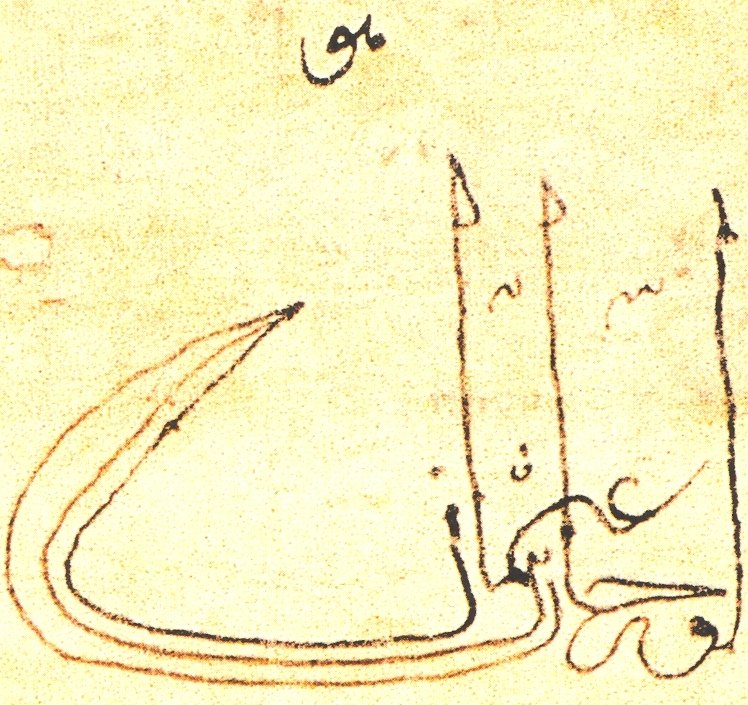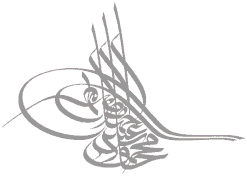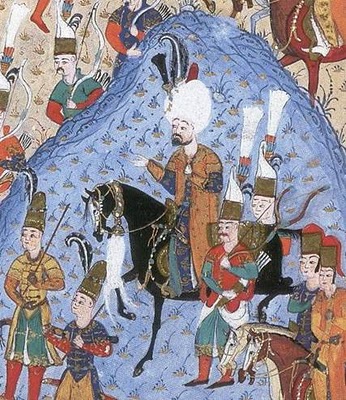|
Tughra
A tughra ( ota, طغرا, ṭuġrā) is a calligraphic monogram, seal or signature of a sultan that was affixed to all official documents and correspondence. Inspired by the tamgha, it was also carved on his seal and stamped on the coins minted during his reign. Very elaborate decorated versions were created for important documents that were also works of art in the tradition of Ottoman illumination, such as the example of Suleiman the Magnificent in the gallery below. The tughra was designed at the beginning of the sultan's reign and drawn by the court calligrapher or '' nişancı'' on written documents. The first tughra examples are from the 14th century. Tughras served a purpose similar to the cartouche in ancient Egypt or the Royal Cypher of British monarchs. Every Ottoman sultan had his own individual tughra. Etymology There are two main schools of thought on the origins of the word tughra. The first sees it derived from a Turkic secretarial emblem called ''tughragh ... [...More Info...] [...Related Items...] OR: [Wikipedia] [Google] [Baidu] |
Tugra Decomposed
A tughra ( ota, طغرا, ṭuġrā) is a calligraphy, calligraphic monogram, seal (device), seal or signature of a sultan that was affixed to all official documents and correspondence. Inspired by the Tamga, tamgha, it was also carved on his seal and stamped on the coins minted during his reign. Very elaborate decorated versions were created for important documents that were also works of art in the tradition of Ottoman illumination, such as the example of Suleiman the Magnificent in the gallery below. The tughra was designed at the beginning of the sultan's reign and drawn by the court calligrapher or ''nisanci, nişancı'' on written documents. The first tughra examples are from the 14th century. Tughras served a purpose similar to the cartouche in ancient Egypt or the Royal Cypher of British monarchs. Every Ottoman sultan had his own individual tughra. Etymology There are two main schools of thought on the origins of the word tughra. The first sees it derived from a Turkic s ... [...More Info...] [...Related Items...] OR: [Wikipedia] [Google] [Baidu] |
Tugra Mahmuds II
A tughra ( ota, طغرا, ṭuġrā) is a calligraphic monogram, seal or signature of a sultan that was affixed to all official documents and correspondence. Inspired by the tamgha, it was also carved on his seal and stamped on the coins minted during his reign. Very elaborate decorated versions were created for important documents that were also works of art in the tradition of Ottoman illumination, such as the example of Suleiman the Magnificent in the gallery below. The tughra was designed at the beginning of the sultan's reign and drawn by the court calligrapher or '' nişancı'' on written documents. The first tughra examples are from the 14th century. Tughras served a purpose similar to the cartouche in ancient Egypt or the Royal Cypher of British monarchs. Every Ottoman sultan had his own individual tughra. Etymology There are two main schools of thought on the origins of the word tughra. The first sees it derived from a Turkic secretarial emblem called ''tughragh'', a ... [...More Info...] [...Related Items...] OR: [Wikipedia] [Google] [Baidu] |
Tughra Orhan I
A tughra ( ota, طغرا, ṭuġrā) is a calligraphic monogram, seal or signature of a sultan that was affixed to all official documents and correspondence. Inspired by the tamgha, it was also carved on his seal and stamped on the coins minted during his reign. Very elaborate decorated versions were created for important documents that were also works of art in the tradition of Ottoman illumination, such as the example of Suleiman the Magnificent in the gallery below. The tughra was designed at the beginning of the sultan's reign and drawn by the court calligrapher or '' nişancı'' on written documents. The first tughra examples are from the 14th century. Tughras served a purpose similar to the cartouche in ancient Egypt or the Royal Cypher of British monarchs. Every Ottoman sultan had his own individual tughra. Etymology There are two main schools of thought on the origins of the word tughra. The first sees it derived from a Turkic secretarial emblem called ''tughragh'', an ... [...More Info...] [...Related Items...] OR: [Wikipedia] [Google] [Baidu] |
Süleyman The Magnificent
Suleiman I ( ota, سليمان اول, Süleyman-ı Evvel; tr, I. Süleyman; 6 November 14946 September 1566), commonly known as Suleiman the Magnificent in the West and Suleiman the Lawgiver ( ota, قانونى سلطان سليمان, Ḳānūnī Sulṭān Süleymān) in his realm, was the tenth and longest-reigning Sultan of the Ottoman Empire from 1520 until his death in 1566. Under his administration, the Ottoman Empire ruled over at least 25 million people. Suleiman succeeded his father, Selim I, as sultan on 30 September 1520 and began his reign with campaigns against the Christian powers in central Europe and the Mediterranean. Belgrade fell to him in 1521 and the island of Rhodes in 1522–23. At Mohács, in August 1526, Suleiman broke the military strength of Hungary. Suleiman became a prominent monarch of 16th-century Europe, presiding over the apex of the Ottoman Empire's economic, military and political power. Suleiman personally led Ottoman armies in con ... [...More Info...] [...Related Items...] OR: [Wikipedia] [Google] [Baidu] |
Suleiman The Magnificent
Suleiman I ( ota, سليمان اول, Süleyman-ı Evvel; tr, I. Süleyman; 6 November 14946 September 1566), commonly known as Suleiman the Magnificent in the West and Suleiman the Lawgiver ( ota, قانونى سلطان سليمان, Ḳānūnī Sulṭān Süleymān) in his realm, was the tenth and longest-reigning Sultan of the Ottoman Empire from 1520 until his death in 1566. Under his administration, the Ottoman Empire ruled over at least 25 million people. Suleiman succeeded his father, Selim I, as sultan on 30 September 1520 and began his reign with campaigns against the Christian powers in central Europe and the Mediterranean. Belgrade fell to him in 1521 and the island of Rhodes in 1522–23. At Mohács, in August 1526, Suleiman broke the military strength of Hungary. Suleiman became a prominent monarch of 16th-century Europe, presiding over the apex of the Ottoman Empire's economic, military and political power. Suleiman personally led Ottoman armies in ... [...More Info...] [...Related Items...] OR: [Wikipedia] [Google] [Baidu] |
Selim III
Selim III ( ota, سليم ثالث, Selim-i sâlis; tr, III. Selim; was the Sultan of the Ottoman Empire from 1789 to 1807. Regarded as an enlightened ruler, the Janissaries eventually deposed and imprisoned him, and placed his cousin Mustafa on the throne as Mustafa IV. Selim was subsequently killed by a group of assassins. Early life Selim III was the son of Sultan Mustafa III and his wife Mihrişah Sultan. His mother Mihrişah Sultan originated in Georgia, and when she became the Valide Sultan, she participated in reforming the government schools and establishing political corporations. His father Ottoman Sultan Mustafa III was very well educated and believed in the necessity of reforms. Mustafa III attempted to create a powerful army during the peacetime with professional, well-educated soldiers. This was primarily motivated by his fear of a Russian invasion. During the Russo-Turkish War, he fell ill and died of a heart attack in 1774. Sultan Mustafa was aware of th ... [...More Info...] [...Related Items...] OR: [Wikipedia] [Google] [Baidu] |
Topkapı Palace
The Topkapı Palace ( tr, Topkapı Sarayı; ota, طوپقپو سرايى, ṭopḳapu sarāyı, lit=cannon gate palace), or the Seraglio, is a large museum in the east of the Fatih district of Istanbul in Turkey. From the 1460s to the completion of Dolmabahçe Palace in 1856, it served as the administrative center of the Ottoman Empire, and was the main residence of its sultans until the 17th century. Construction, ordered by the Sultan Mehmed the Conqueror, began in 1459, six years after the conquest of Constantinople. Topkapı was originally called the "New Palace" (''Yeni Saray'' or ''Saray-ı Cedîd-i Âmire'') to distinguish it from the Old Palace (''Eski Saray'' or ''Sarây-ı Atîk-i Âmire'') in Beyazıt Square. It was given the name ''Topkapı'', meaning Cannon Gate, in the 19th century. The complex expanded over the centuries, with major renovations after the 1509 earthquake and the 1665 fire. The palace complex consists of four main courtyards and many smaller b ... [...More Info...] [...Related Items...] OR: [Wikipedia] [Google] [Baidu] |
Murad II
Murad II ( ota, مراد ثانى, Murād-ı sānī, tr, II. Murad, 16 June 1404 – 3 February 1451) was the sultan of the Ottoman Empire from 1421 to 1444 and again from 1446 to 1451. Murad II's reign was a period of important economic development. Trade increased and Ottoman cities expanded considerably. In 1432, the traveller Bertrandon de la Broquière noted that Ottoman annual revenue had risen to 2,500,000 ducats, and that if Murad II had used all available resources he could easily have invaded Europe. Early life Murad was born in June 1404 (or 1403) to Sultan Mehmed I. The identity of his mother is disputed. According to 15th century historian Şükrullah, Murad's mother was a concubine. Hüseyin Hüsâmeddin Yasar, an early 20th century historian, wrote in his work ''Amasya Tarihi'', that his mother was Şehzade Hatun, daughter of Divitdar Ahmed Pasha. According to historians İsmail Hami Danişmend, and Heath W. Lowry, his mother was Emine Hatun, daughter of Ş ... [...More Info...] [...Related Items...] OR: [Wikipedia] [Google] [Baidu] |
Orhan I
Orhan Ghazi ( ota, اورخان غازی; tr, Orhan Gazi, also spelled Orkhan, 1281 – March 1362) was the second bey of the Ottoman Beylik from 1323/4 to 1362. He was born in Söğüt, as the son of Osman I. In the early stages of his reign, Orhan focused his energies on conquering most of northwestern Anatolia. The majority of these areas were under Byzantine rule and he won his first battle at Pelekanon against the Byzantine Emperor Andronikos III Palaiologos. Orhan also occupied the lands of the Karasids of Balıkesir and the Ahis of Ankara. A series of civil wars surrounding the ascension of the nine-year-old Byzantine emperor John V Palaiologos greatly benefited Orhan. In the Byzantine civil war of 1341–1347, the regent John VI Kantakouzenos married his daughter Theodora to Orhan and employed Ottoman warriors against the rival forces of the empress dowager, allowing them to loot Thrace. In the Byzantine civil war of 1352–1357, Kantakouzenos used Ottoman force ... [...More Info...] [...Related Items...] OR: [Wikipedia] [Google] [Baidu] |
Ottoman Illumination
Turkish or Ottoman illumination covers non-figurative painted or drawn decorative art in books or on sheets in ''muraqqa'' or albums, as opposed to the figurative images of the Ottoman miniature. In Turkish it is called “tezhip”, meaning “ornamenting with gold”. It was a part of the Ottoman Book Arts together with the Ottoman miniature (''taswir''), calligraphy (''hat''), bookbinding (''cilt'') and paper marbling (''ebru''). In the Ottoman Empire, illuminated and illustrated manuscripts were commissioned by the Sultan or the administrators of the court. In Topkapi Palace, these manuscripts were created by the artists working in Nakkashane, the atelier of the miniature and illumination artists. Both religious and non-religious books could be illuminated. Also sheets for albums ''levha'' consisted of illuminated calligraphy (''hat'') of ''tughra'', religious texts, verses from poems or proverbs, and purely decorative drawings. The illuminations were made either surround ... [...More Info...] [...Related Items...] OR: [Wikipedia] [Google] [Baidu] |
Tamga
A tamga or tamgha (from otk, 𐱃𐰢𐰍𐰀, tamga, lit=stamp, seal; tr, damga; mn, tamga; ; ); an abstract seal or stamp used by Eurasian nomads and by cultures influenced by them. The tamga was normally the emblem of a particular tribe, clan or family. They were common among the Eurasian nomads throughout Classical Antiquity and the Middle Ages. Similar tamga-like symbols were sometimes adopted by sedentary peoples adjacent to the Pontic–Caspian steppe both in Eastern Europe and Central Asia. Tamgas in the steppe tradition Ancient origins Tamgas originate in pre-historic times, but their exact usage and development cannot be continuously traced over time. There are, however, symbols represented in rock art that are referred to as tamgas and that are most likely functionally equivalent with medieval tamgas. In the later phases of the Bosporan Kingdom, the ruling dynasty applied personal tamgas, composed of a fragment representing the family and a fragment representi ... [...More Info...] [...Related Items...] OR: [Wikipedia] [Google] [Baidu] |
Signature
A signature (; from la, signare, "to sign") is a handwritten (and often stylized) depiction of someone's name, nickname, or even a simple "X" or other mark that a person writes on documents as a proof of identity and intent. The writer of a signature is a signatory or signer. Similar to a handwritten signature, a signature work describes the work as readily identifying its creator. A signature may be confused with an autograph, which is chiefly an artistic signature. This can lead to confusion when people have both an autograph and signature and as such some people in the public eye keep their signatures private whilst fully publishing their autograph. Function and types The traditional function of a signature is to permanently affix to a document a person's uniquely personal, undeniable self-identification as physical evidence of that person's personal witness and certification of the content of all, or a specified part, of the document. For example, the role of a signat ... [...More Info...] [...Related Items...] OR: [Wikipedia] [Google] [Baidu] |





.jpg)
.jpg)

